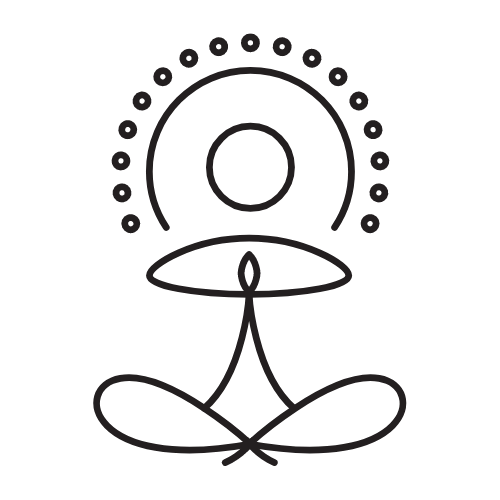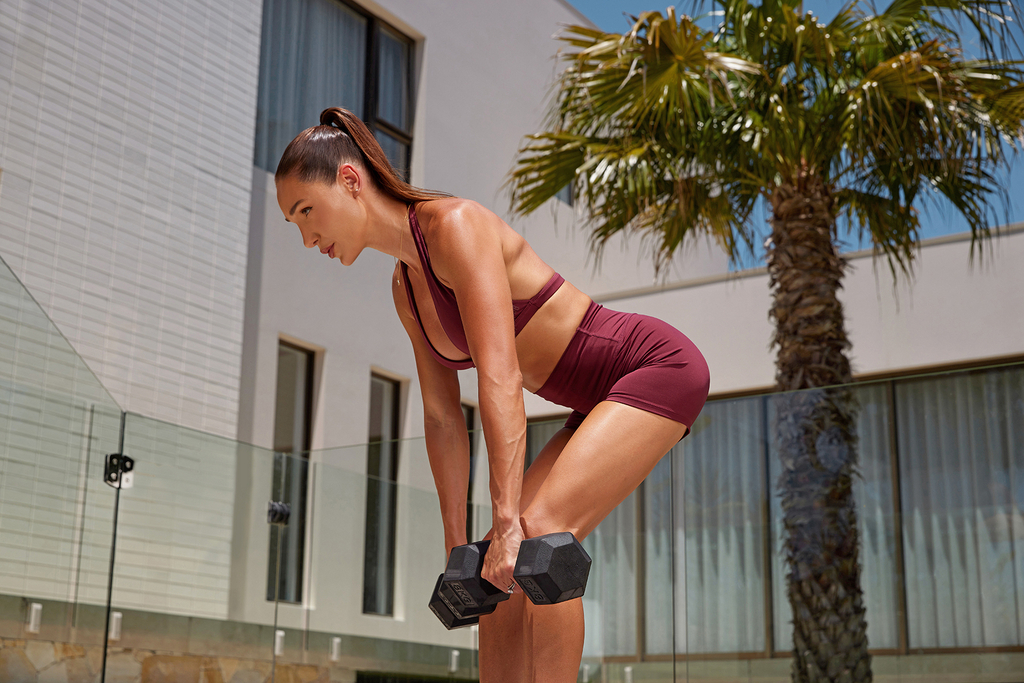Exercise variations are there to help you progress, target slightly different muscles and keep your training interesting. But it’s a common experience to see traditional deadlifts and Romanian deadlifts (aka RDLs) in your strength training program and wonder what on earth you’re supposed to be doing differently between each exercise when they look so similar.
Whether you’ve got both movements in your routine and are trying to master your form or you’re trying to decide which of the two is better for your goals, here’s everything you need to know when weighing up the RDL vs deadlift comparison.
Starting position
What’s different?
One of the key differences between an RDL and a traditional deadlift is your starting position. Performing a deadlift (as demonstrated above) involves bending down and lifting the weight up off the floor, whereas with an RDL (as demonstrated below) you start in a standing position holding the weight in front of your hips before lowering it to your shins.
What’s the same?
With both exercises, your starting position involves having your feet hip-width apart and the weight set up close to and in front of your body.
Movement pattern and range of motion
What’s different?
With an RDL, the other key difference is in the movement itself. With each rep, you’ll lower the weight to about shin height with only a very slight bend in your knees before engaging your hamstrings and glutes to pull your hips through and return to the starting standing position.
Because a deadlift involves you bending down to pick up the weight off the ground, lifting it to hip height then lowering it all the way back down to the floor again, there is a greater range of motion and a more significant knee bend required to perform the lift.
A helpful movement cue to master a traditional deadlift is to focus on pushing through the floor to lift the weight, whereas it’s more helpful to think about pushing your hips back when performing an RDL.
What’s the same?
With both exercises, you’ll maintain a neutral spine to protect your back (we don’t want to see any rounding), the weight stays close to your body the entire time, and you’ll be moving primarily by hinging at the hips, rather than bending at the knees as you would in a squat. To get the most out of both variations, you’ll want to move slowly and with control.
Muscles worked
What’s different?
Due to the slight difference in movement and the reduced knee bend, RDLs primarily target your glutes and hamstrings, and you should feel tension in those muscles throughout each rep. With a traditional deadlift, lifting the weight from the floor gives you more of a full-body workout, recruiting your quads, lower back and even your traps and lats more than you would in an RDL.
What’s the same?
RDLs and traditional deadlifts are both compound exercises, meaning they work multiple major muscle groups at once. Regardless of which movement you choose, you’ll be strengthening your glutes, hamstrings, forearms, spinal stabilisers, lower back, core, grip strength and posterior chain (the back side of your body).
Equipment
What’s different?
Because you recruit a larger number of muscles in a traditional deadlift, your potential for weight progression is greater.
What’s the same?
You can use whatever weights you like or have access to for both exercises, whether that’s a barbell, dumbbells or even a kettlebell.
RDL vs deadlift: Which should you choose?
If you’re trying to build overall strength and power and target a greater number of muscle groups, you’ll get more bang for your buck with traditional deadlifts. This also makes them a good option if you’re short on time and trying to have the most effective workout you can.
If you’ve got lower back issues or are trying to target your glutes and hamstrings, RDLs are where it’s at, otherwise we highly recommend incorporating both exercises into your routine to optimise your results. For a YogaFokus program that includes both exercises, we love options like PWR Strength, PWR Strength At Home, Ignite Strength and Strength & Sculpt.
No matter which exercise you go for, move with control to get the most out of every rep and choose a weight that feels challenging but achievable to complete all your reps with good form. For beginners, take your time to master the hip hinge movement first using bodyweight first, before progressing to light weights or an empty barbell.
Work out anywhere, anytime with YogaFokus
Ready for your first workout?
Your strongest routine
When it comes to the RDL vs deadlift debate, there’s actually a lot to love about both exercises and there is no clear winner. Your personal preference might come down to your goals, how much time you have for your session or any lower back issues. Our preference? Doing a bit of both for the ultimate, well-rounded strength training routine.
Level Up Your Inbox
Subscribe for the latest fitness and wellbeing news, exclusive offers, free workouts and trainer tips in your inbox.

